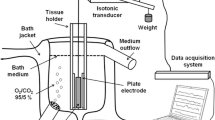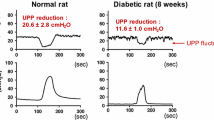Summary
Biological research historically has been separated into either basic research or clinical research. A third category which combines elements of both basic and clinical research can be called applied basic research in which basic research techniques are utilized in the study of specific clinically encountered problems with the goal to either develop novel therapies or improve existing ones. In Urology there has been a significant increase in interest in applied basic research. This increased interest of clinical urologists in basic science is reflected also by the increase in the number of basic scientists working on urologically related topics in conjunction with academic urologists. It is the purpose of this article to present information on basic research techniques and animal models which are presently utilized for neuromuscular research of the lower urinary tract. It is hoped that this information will be useful to the academic urologist who has an interest in developing an animal research program in this area.
Similar content being viewed by others
References
Dorland's Illustrated Medical Dictionary (1974) Saunders, Philadelphia
DeGroat WC, Lalley PM (1972) Reflex firing in the lumbar sympathetic outflow to activation of vesical afferent fibres. J Physiol 226:289–309
DeGroat WC, Saums WR (1976) Synaptic transmission in parasympathetic ganglia in the urinary bladder of the cat. J Physiol 256:137–158
Torbey K, Leadbetter WF (1963) Innervation of the bladder and lower ureter: studies on pelvic nerve section and stimulation in the dog. J Urol 90:395–404
Klermak B (1974) Motility of the urinary bladder in cats during filling at physiologic rates: intravesical pressure patterns studied by new methods of cystometry. Acta Physiol Scand 90:565–577
Sogbein SK, Downie JW, Awad SA (1984) Urethral response during bladder contraction induced by subcutaneous bethanechol chloride: elicitation of a sympathetic reflex urethral constriction. J Urol 131:791–795
McGuire EJ (1978) Experimental observations on the integration of bladder and urethral function. Invest Urol 15:303–307
Braschini H, Schmidt RA, Tanagho EA (1978) The male genitourinary sphincter mechanism in the dog. Invest Urol 15:284–287
Creed KE (1979) The role of the hypogastric nerve in bladder and urethral activity of the dog. Br J Pharmacol 65:367–375
Levin RM, Wein AJ (1979) Distribution and function of adrenergic receptors in the urinary bladder of the rabbit. Mol Pharmacol 16:441–448
Levin RM, Shofer F, Wein AJ (1980) Cholinergic, adrenergic, and purinergic response of sequential strips of rabbit urinary bladder. J Pharmacol Exp Ther 212:536–540
Levin RM, Staskin DR, Wein AJ (1983) The muscarinic cholinergic binding kinetics of the human urinary bladder. Neurourol Urodynam 2:221–225
Levin RM, Staskin DR, Wein AJ (1983) Analysis of the anticholinergic and musculotropic effects of desmethylimipramine on the rabbit urinary bladder. Urol Res 11:259–262
Levin RM, Wein AJ (1984) Comparative effects of five tricyclic compounds on the rabbit urinary bladder. Neurourol Urodynam (in press)
Paton WDM (1955) The response of the guinea-pig ileum to electrical stimulation by coaxial electrodes. J Physiol 127:40P-41P
Downie JW, Dean DM (1977) The contribution of cholinergic postganglionic neurotransmission to contractions of rabbit detrusor. J Pharmacol Exp Ther 203:417–425
Levin RM, Wein AJ (1982) Response of the in-vitro whole bladder (rabbit) preparation to autonomic agonists. J Urol 128:1087–1090
Levin RM, Brendler K, Wein AJ (1983) Comparative pharmacological response of an in-vitro whole bladder preparation (rabbit) with the response of isolated smooth muscle strips. J Urol 30:377–381
Levin RM, Goldman M, Wein J (1984) Effect of isoproterenol and EGTA on the volume-pressure relationship of the in-vitro whole bladder preparation. Neurourol Urodynam (in press)
Levin RM, High J, Wein AJ (1982) Metabolic and contractile effects of anoxia on the rabbit urinary bladder. J Urol 128:194–196
Lemasters JJ, Hackenbrock LR (1978) Firefly luciferase assay for ATP production by mitochondria. Methods Enzymol 57:36–50
Levin RM, Einstein R, Wein AJ (1982) Phosphodiesterase activity of the lower urinary tract. J Urol 128:615–617
Levin RM, Jacoby R, Wein AJ (1981) Effect of adenosine triphosphate on contractility and adenosine triphosphatase activity of the rabbit urinary bladder. Mol Pharmacol 19:525–528
DelaTorre JC, Surgeon JW (1976) A methodological approach to rapid and sensitive monamine histofluorescence using a modified glyoxylic acid technique. The SIG method. Histochemistry 49:81–93
Falch B, Hillarp NA, Thieme G, Torp A (1962) Fluorescence of catecholamines and related compounds condensed with formaldehyde. J Histochem Cytochem 10:348–354
Levin RM, Malkowicz SB, Jacobowitz D, Wein AJ (1981) The ontogeny of the autonomic innervation and contractile response of the rabbit urinary bladder. J Pharmacol Exp Ther 219:250–257
Hokfelt T, Johansson O, Ljungdahl A, Lundberg J, Schultzberg M (1980) Peptidergic neurons. Nature 284:515–521
Koelle G (1955) The histochemical identification of acetylcholinesterase in cholinergic, adrenergic, and sensory neurons. J Pharmacol Exp Ther 114:167–184
Elbadawi A, Schenk E (1967) Histochemical methods for separate, consecutive and simultaneous demonstrations of acetylcholinesterase and norepinephrine in cryostat sections. J Histochem Cytochem 15:580–588
Dixon JS, Gosling JA (1983) Histology and fine structure of the muscularis mucosae of the human urinary bladder. J Anat 136:265–271
Elbadawi A (1982) Ultrastructure of vesicourethral innervation. I. Neuroeffector and cell functions in the male internal sphincter. J Urol 128:120–128
Author information
Authors and Affiliations
Rights and permissions
About this article
Cite this article
Levin, R.M., Malkowicz, S.B. & Wein, A.J. Laboratory models for neuropharmacologic studies. World J Urol 2, 222–233 (1984). https://doi.org/10.1007/BF00327005
Issue Date:
DOI: https://doi.org/10.1007/BF00327005




